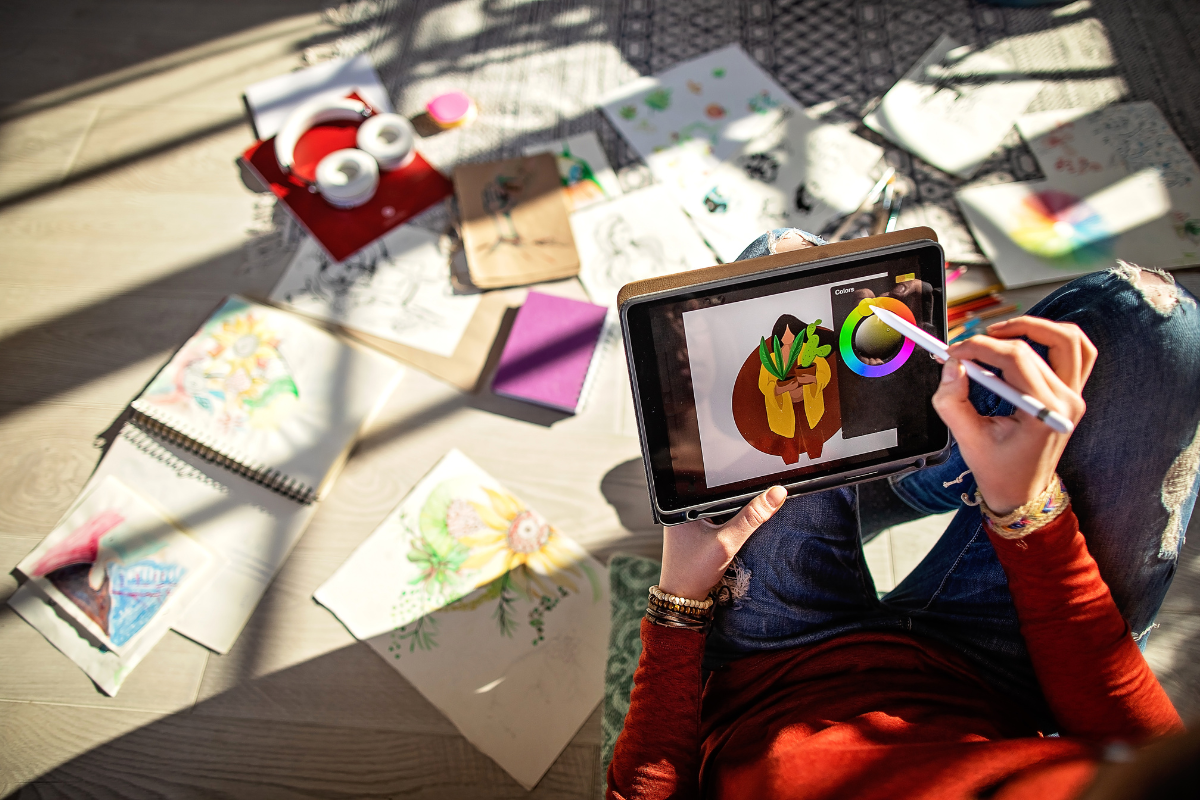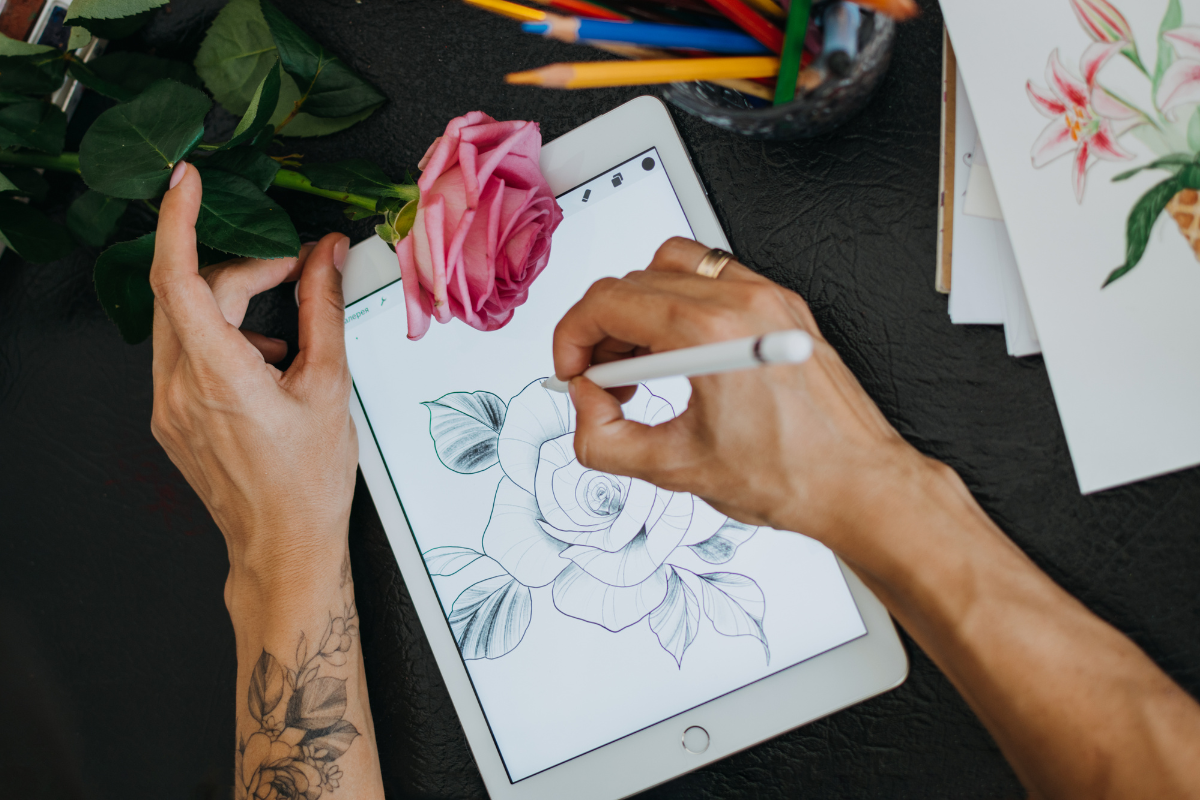Digital art—creatively harnessing computer-based tools from software and generative algorithms to virtual and augmented reality—is swiftly becoming a major domain of artistic expression and cultural commerce. Its rise is reshaping creation, distribution and experience. Singapore, as a smart-nation and cultural innovator, stands at the heart of this revolution. With strong government support, world-class infrastructure, a diverse and tech-savvy talent pool, and commitment to creative industries, the city-state is uniquely poised to shape the digital art future.
Exciting possibilities abound: artworks generated by artificial intelligence, immersive installations that respond to presence and gesture, digital tokens that redefine art ownership, and entirely new metaverse arenas where creativity is persistent, social and experiential. Let us explore how technologies and trends are evolving—and how Singapore is embracing them.
Emerging Technologies Driving Digital Art
Artificial Intelligence in Art Creation
AI has become a potent tool for artists. Generative adversarial networks (GANs), style-transfer systems, and other models enable creators to generate novel visuals or remix existing styles. Ethical debates swirl around authorship, originality and creativity: Is the artist the programmer, the algorithm or both? Who owns the output?
In Singapore, practitioners like the AI-driven artist operating as Niceaunties explore these intersections—creating surreal worlds centred on Southeast-Asian themes using platforms such as DALL-E, RunwayML and SORA. Similarly, Shavonne Wong, once a fashion photographer, now uses AI and 3D to fashion virtual models and NFT works through her Gen V Agency; she has exhibited NFT-based interactive projects like EVA at ArtScience Museum and Art SG 2025. Such artists exemplify how local creativity meshes with AI.
NFTs and the Blockchain Art Market
Non-fungible tokens (NFTs) have transformed how digital artworks are owned, authenticated and monetised. With unique blockchain signatures, NFTs confer provenance and scarcity in an otherwise infinitely replicable medium.
In Singapore, Gajah Gallery pioneered one of the first local NFT art showcases—working with traditional artists to mint digital editions and host hybrid exhibitions. The process revealed both enthusiasm and friction: artists and patrons needed to learn new technological processes and communication had to be painstakingly aligned. The National Gallery Singapore also experimented with free “NFT vending machines” via Y-Lab and ArtWallStreet, enabling users to redeem blockchain artworks in public spaces.
Singapore’s courts have begun treating NFTs as legal property, with the High Court recognising them as assets subject to jurisdiction—underscoring Singapore’s readiness to regulate and participate in the Web3 art ecosystem.
Virtual and Augmented Reality as Artistic Mediums
VR and AR offer immersive platforms where digital art comes alive. At the ArtScience Museum’s permanent VR Gallery, visitors have experienced works like Sen, Awavena, Exquisite Corpse and The Starry Sand Beach, which combine cinematic VR and interactivity to evoke emotion, ecology and empathy.
One notable exhibition, Samsara, by Hsin-Chien Huang, invites users to experience reincarnation through VR—a spiritual and visual journey spanning epochs of life, selected at Venice VR Film Festival and Cannes.
Beyond curated shows, local creative-tech players such as Fantasium offer AR/VR workshops and installations, bringing immersive technology into schools and community spaces.
Extended Reality (XR) and the Metaverse
XR and metaverse platforms—persistent virtual worlds where users interact socially and creatively—open a new frontier for digital art. Singapore’s Project Arts Metaverse, launched under Our SG Arts Plan (2023–27), is bringing together arts organisations, tech partners and government agencies to pilot virtual concerts, exhibitions and even gaming adaptations of Shakespeare on platforms like Roblox, scheduled through to 2026. Examples include Macbeth on Roblox by Singapore Repertory Theatre, VGIG digital gigs by Bandwagon Labs, and virtual Baybeats in the metaverse.
Key Trends Shaping the Digital Art Landscape
Democratization of Art Creation and Consumption
Digital tools lower barriers: anyone with a smartphone and basic software can create visual or interactive works. Online platforms, communities and marketplaces—on Web3 or social media—allow artists and audiences to connect directly globally. This empowers emerging voices and fosters niche, experimental art that bypasses traditional gatekeepers.
Interactive and Participatory Art
Digital art is no longer passive. Works can respond to user movement, choices, voice or presence. Immersive installations often invite co-creation—participants influence the art in real time, making the audience part of the experience. Singapore’s recent exhibitions like Wonders of Nature at the New Art Museum Singapore include interactive digital gameplay and VR workshops for audiences to make their own XR paintings.
Cross-Disciplinary Collaboration
Art increasingly converges with technology, science, design and sustainability. Collectives like PHUNK, founded in Singapore in 1994, combine graphic design, sculpture, digital art and cultural commentary—bridging commercial, fine art and tech realms Wikipedia+1Wikipedia+1. Projects under Project Arts Metaverse similarly involve artists, engineers, curators, game-developers and institutions.
Sustainability in Digital Art
Energy-intensive technologies—especially blockchain validation systems—raise environmental concerns. The digital art community is exploring “green NFTs”, carbon-offset mechanisms, energy-efficient blockchains and awareness of footprint. Singapore’s creative-tech initiatives are increasingly conscious of this, exploring sustainable XR, low-energy display systems, and carbon-aware platforms.
Singapore as a Digital Art Hub
Government agencies such as the National Arts Council (NAC) and the Infocomm Media Development Authority (IMDA) provide funding, grants and infrastructure for digital arts and creative technology development. Schemes like the Organisation Transformation Grant have supported galleries and artists transitioning into digital and NFT creation NAC.
Educational institutions such as LASALLE College of the Arts and Nanyang Technological University (NTU), and special programmes by organisations like MeshMinds or Fantasium, cultivate digital-art talent, overseeing XR workshops and creative technology education.
Notable Singaporean digital artists and collectives include Niceaunties, Shavonne Wong, PHUNK, among others, whose work spans AI-generated video, virtual avatars, NFTs, installations and XR.
Flagship events such as MeshMinds (e.g. ArtxTechforGood blending sustainability, VR and digital storytelling) and Singapore Art Week host immersive exhibitions and cross-sector forums that bring together creatives, technologists and policymakers in dialogues about innovation, art and society.
Challenges and Opportunities
- Challenges: copyright and digital ownership rights remain complex in a replicated medium; long-term preservation of digital or virtual works is uncertain; the volatility of NFT markets may foster speculation; access to digital art may remain unequal across demographics; and bridging the digital divide requires inclusive education and infrastructure.
- Opportunities: digital art unlocks global reach and new revenue streams for creators; encourages experimentation and redefining of artistic boundaries; fosters collaboration across disciplines; and reinforces Singapore’s strategic ambition to lead in creative technology as part of its economic innovation agenda.
Conclusion: The Future is Now (and Beyond)

The transformative power of AI, blockchain, VR/AR/XR and the metaverse is already reshaping artistic creation, interaction and ownership. Singapore, with its technological excellence, cultural ambition and policy foresight, is charting a leading course for digital art’s future.
As these emerging technologies become more sophisticated and pervasive, they strengthen human creativity—providing new modes of expression, engagement and connection. Singapore’s initiatives show that the future of digital art is not distant: it is happening now, pixel by pixel, world by world.
Ultimately, digital art’s evolution will redefine what it means to create—and to experience—art. Singapore’s canvas is growing vast. The question is: how will we paint the world of tomorrow?




